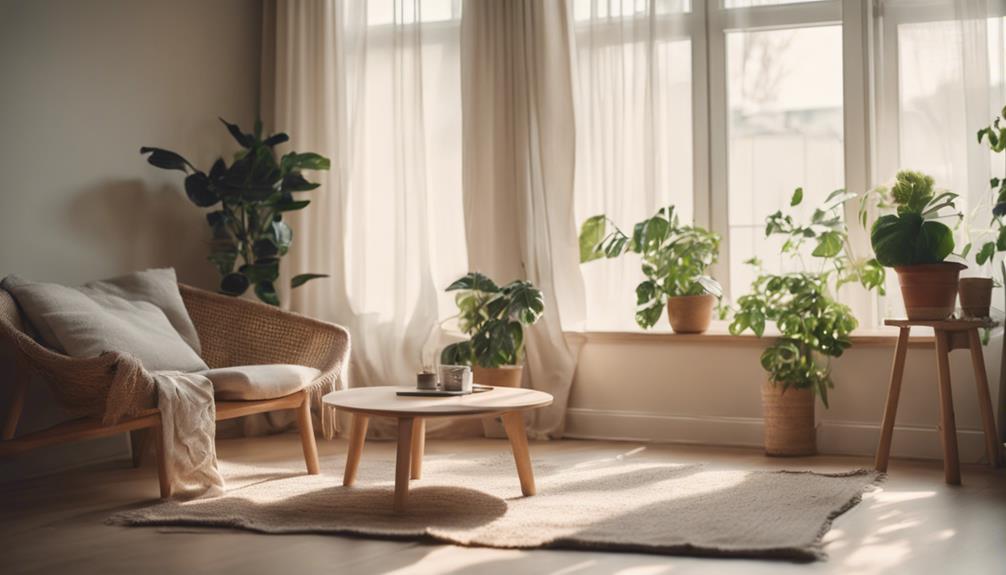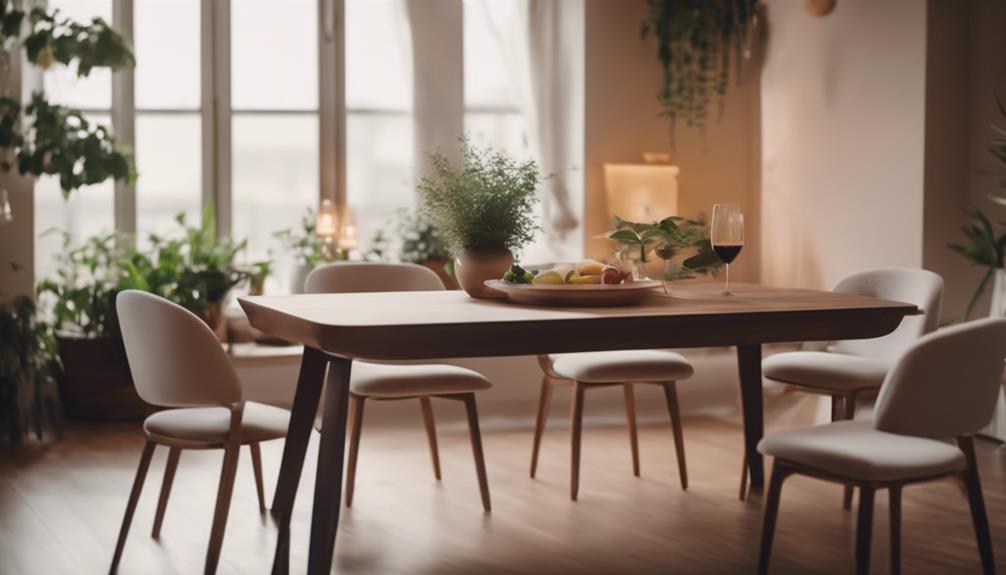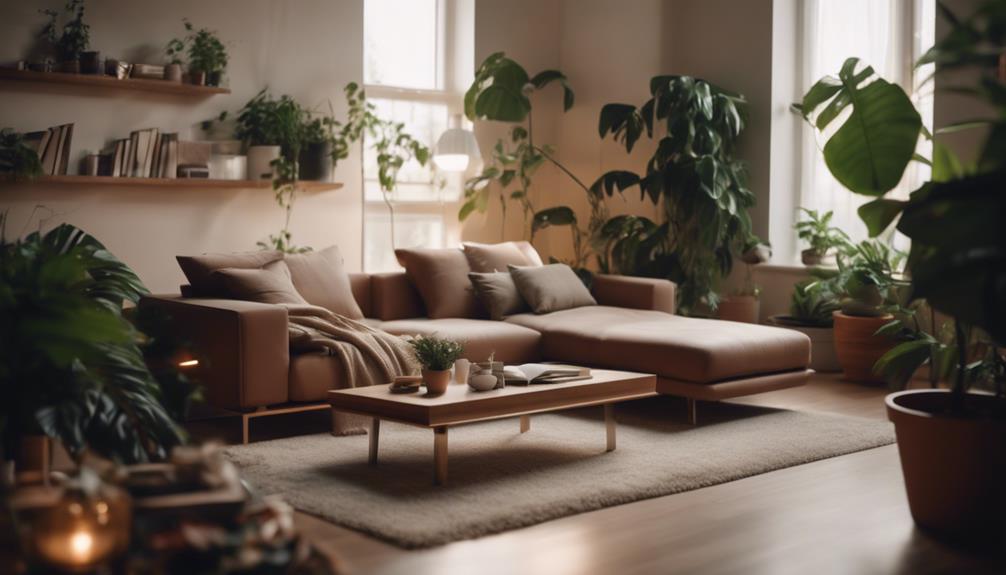Joining the Generation Flex Movement means you're choosing a lifestyle filled with adaptability and excitement. You'll prioritize experiences over traditional stability, embracing the freedom to explore new opportunities. With flexible living arrangements like short-term rentals and co-living spaces, you can easily relocate and connect with diverse communities. Furnished apartments remove the hassle of moving, letting you focus on what truly matters. Whether you're working remotely or pursuing creative projects, your work environment can reflect your unique lifestyle. There's so much more to discover about this empowering movement and how it can transform your life for the better.
Key Takeaways
- Embrace flexible living by opting for short-term rentals and furnished apartments that cater to your on-the-go lifestyle.
- Prioritize experiences and adventures over traditional stability to enhance personal growth and adaptability.
- Leverage technology to stay connected and work remotely, allowing freedom to explore new opportunities.
- Collaborate in innovative workspaces designed for flexibility, creativity, and productivity to thrive in your professional life.
Understanding Generation Flex
Understanding Generation Flex means recognizing how this dynamic group values flexibility and adaptability in their lifestyle choices, from housing to work arrangements.
As someone immersed in this culture, you prioritize experiences over the traditional stability that previous generations sought. You adapt quickly to change, whether it's relocating for a job or embracing remote work opportunities.
Technology plays a crucial role, empowering you to connect and work from anywhere, thus reshaping your daily routines.
Housing trends reflect this desire for mobility, with a growing preference for short-term rentals and co-living spaces. You seek arrangements that minimize long-term commitments, allowing you to explore new environments and seize opportunities without being tied down.
Embracing this fluid lifestyle offers you freedom and excitement.
The Appeal of Furnished Apartments
Furnished apartments perfectly align with your desire for flexibility, offering a hassle-free living solution that complements your dynamic lifestyle. You can enjoy the freedom of moving without the burden of heavy furniture.
Here's why they're appealing:
- Convenience: Move in and start living without the hassle of buying or moving furniture.
- Cost-Effective: Save money by avoiding furniture purchases and extra moving expenses.
- Flexibility: Enjoy short-term leases and the ability to relocate easily as your life changes.
- Comfort: Experience a sense of home right away with all essential furnishings provided.
With furnished apartments, you can focus on what truly matters: exploring new opportunities and enjoying your vibrant life.
CORT Furniture Rental Solutions

CORT Furniture Rental Solutions offer you stylish and customizable options that make transitioning into new spaces effortless and enjoyable.
You can choose from a wide array of furniture styles that fit your taste and needs, ensuring your new home feels just right.
With flexible rental terms, you won't have to worry about long-term commitments or the hassle of purchasing and moving heavy furniture.
CORT also collaborates with property management to provide Furniture as an Amenity™, streamlining your move-in process.
Plus, their online and in-store selection makes it easy to find exactly what you want.
Embrace the freedom of flexibility while enjoying a beautifully furnished living space that reflects your unique lifestyle.
The Future of Workspaces
As remote work becomes increasingly prevalent, the future of workspaces is evolving to prioritize flexibility, collaboration, and employee well-being.
You'll notice that modern work environments are designed to adapt to your needs, fostering creativity and comfort.
Here are some key elements shaping these spaces:
- Flexible layouts: Configurable workstations that suit different tasks and team dynamics.
- Collaborative zones: Areas specifically designed for teamwork, brainstorming, and innovation.
- Ergonomic furniture: Comfort-focused designs that support your health and productivity.
- Tech integration: Advanced tools and connectivity that streamline your workflow and enhance communication.
Embracing these trends means you'll thrive in a workspace that aligns with your lifestyle and work preferences, making your job more enjoyable and effective.
Moving Trends Among Young Adults

Young adults are increasingly embracing a culture of frequent relocations, driven by their desire for flexibility and new experiences. You're likely seeking new adventures, job opportunities, or simply a change of scenery. This trend is reflected in the rise of furnished rentals, co-living spaces, and flexible lease terms.
Here's a glimpse into the moving trends:
| Trend | Description | Impact |
|---|---|---|
| Frequent Relocations | Moving every 1-2 years | Increased adaptability |
| Short-Term Rentals | Preference for month-to-month leases | Lower financial commitment |
| Co-Living Spaces | Shared living arrangements | Community and networking |
| Urban Migration | Moving to cities for jobs | Access to diverse opportunities |
As you navigate this dynamic lifestyle, embracing these trends can enhance your living experience.
Benefits of Flexible Living
Embracing flexible living offers significant advantages, including the freedom to explore new locations and opportunities without the constraints of traditional long-term commitments. Here are some key benefits you'll enjoy:
- Enhanced Mobility: You can easily relocate for new job prospects or adventures, adapting to changing circumstances.
- Cost Savings: By avoiding long-term leases and excessive moving costs, you can allocate your budget towards experiences rather than fixed assets.
- Work-Life Balance: Flexible living allows you to create an environment that suits your lifestyle, enhancing your overall well-being.
- Diverse Experiences: Experience different cultures and communities, enriching your life and broadening your perspective.
With flexible living, you gain the freedom to create a life that truly reflects your values and aspirations.
Embracing the Gen Flex Lifestyle

The Gen Flex lifestyle invites you to prioritize experiences and adaptability, allowing for a dynamic approach to living and working in today's fast-paced world. This modern way of life encourages individuals to embrace change, seek out new opportunities, and explore diverse paths that align with their evolving goals and passions. Whether it’s relocating to a new city or shifting between roles in a hybrid work environment, flexibility becomes the key to thriving. For those on the go, having practical packing tips to speed up moving can simplify transitions and make it easier to adapt to whatever comes next.
You'll find that flexibility opens doors to new opportunities, whether it's enjoying furnished rentals that fit your transient lifestyle or working remotely from anywhere. Embrace the freedom to explore different cities, cultures, and career paths without the weight of traditional commitments.
By choosing adaptable living spaces and work environments, you streamline your life, making room for what truly matters. Connect with like-minded individuals, collaborate in creative workspaces, and stay engaged in experiences that enrich your life.
In this movement, you're not just surviving; you're thriving with purpose and passion.
Conclusion
As you step into the vibrant world of Generation Flex, imagine your life as a canvas, painted with the colors of adventure and spontaneity.
Embrace the freedom to roam, work, and live on your terms, where each day holds the promise of new experiences.
With furnished rentals and flexible leases, you're not just surviving; you're thriving.
So, grab your dreams and let them take flight—your journey awaits, and the horizon is limitless!










